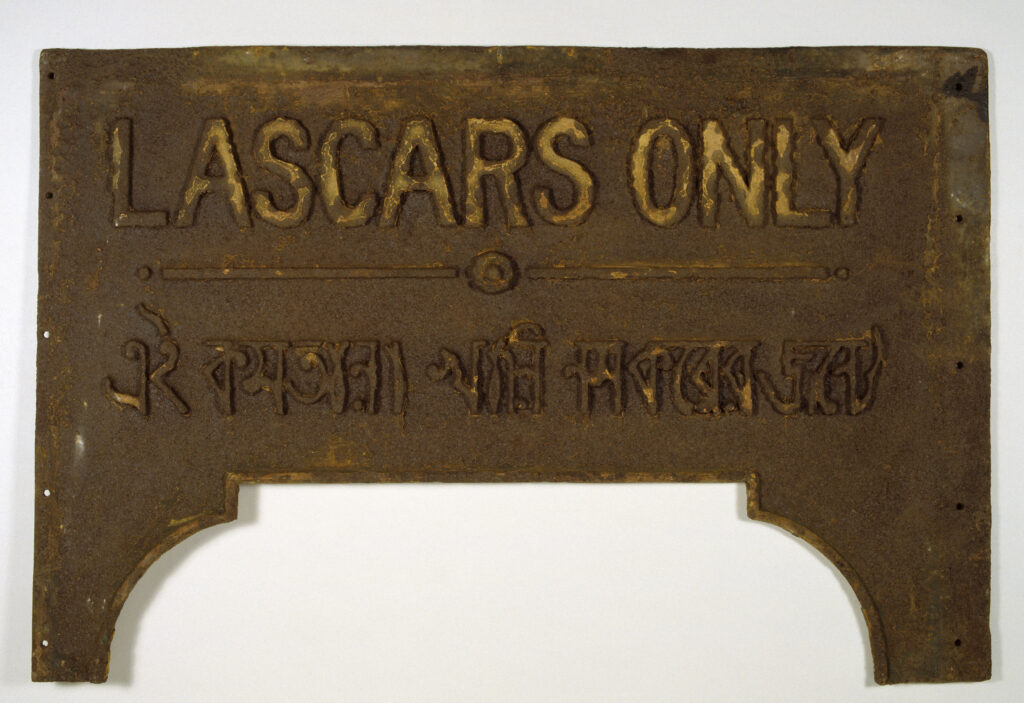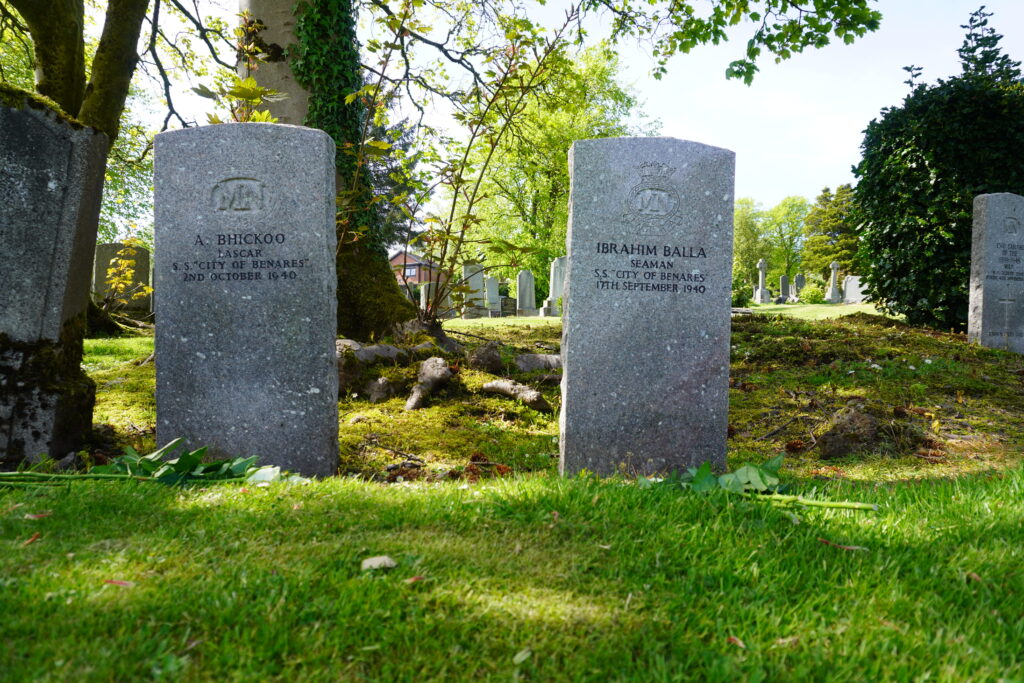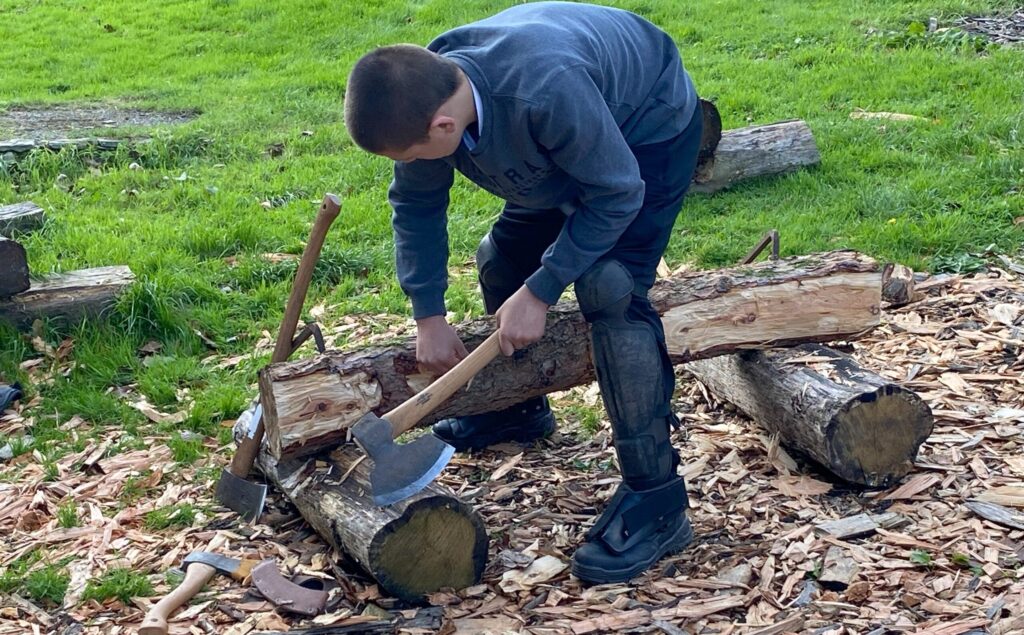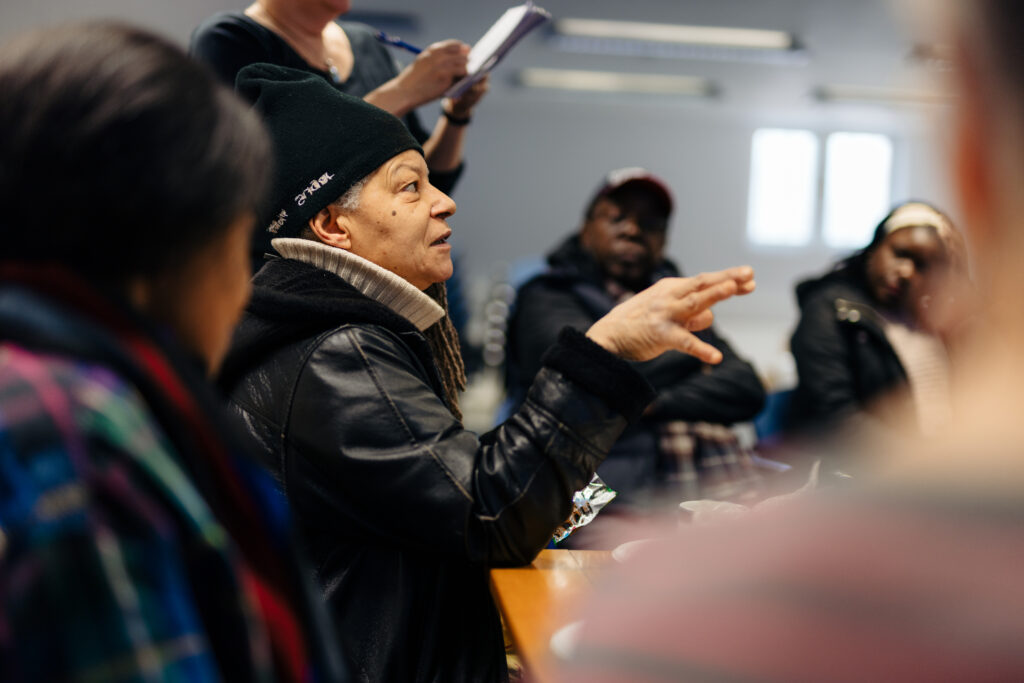Museums Change Lives | 2023 Winners
Radical Changemaker Award | Zeynep Kuşsan

Museum of London
Harry Kane has appeared in many of the world’s most iconic football grounds, but one of the record goalscorer’s most telling contributions was made on a gallery floor.
The life and career of the former Tottenham Hotspur frontman was celebrated in the Harry Kane: I Want to Play Football exhibition at the Museum of London in 2022, a joyous celebration for fans and non-sports followers alike.
That made the enterprise a double delight for curator and Spurs supporter Zeynep Kuşsan.
“I used to pop downstairs when it was on and see lots of happy people, many of whom were not regular museum visitors,” she says.
“There were so many connections across generations, so many memories as children explained football to confused mums and dads, and granddads came with youngsters decked out in their teams’ shirts.”
So it is a surprise to learn that the exhibition came, as Kuşsan admits, “from a place of vulnerability and pain”.
“It was obvious during the pandemic that people needed a lift, something that would take them away from the bad things happening in the world.
"I remember seeing TV footage of a mother trying desperately hard to explain to her son why he couldn’t go the football. She took him to the closed stadium to show him how absolutely no one was allowed in at that point.”
Who better, then, to raise a nation’s spirits than one of its favourite sporting sons? Kuşsan contacted the Kane family, which was then in the process of setting up its own foundation aimed at improving mental health.
The England captain himself supplied mountains of memorabilia for the exhibition, along with a voiceover commentary and his preferred pre-match playlist of heart-pumping pop music.
“It was a piece of work, obviously, but looking back I now realise how exciting it was. I have to admit I had a fan-girl moment when I saw his Golden Boots [presented to leading goalscorers] for the first time.”
The opening weeks of the Harry Kane show recorded a 20% increase in first-time visitors, says Kuşsan.
“We all agreed that the exhibition should not be a vanity project but a fun way for everyone to share a commitment towards communities and wellbeing,” says Kuşsan, who adds that the ethos of the show came from her own dedication towards museums making a difference.

“My work is based around making them happy, healthy, inclusive spaces accessible to everyone,” she says. “The existence of networks such as Museum as Muck, Museum Detox and the LGBTQ groups has highlighted problems. We all make mistakes and it’s a huge process of learning and unlearning, making progress with kindness as you go.”
Since the exhibition, both Kane and Kuşsan have completed transfers – to Bayern Munich and the London Transport Museum respectively.
“It was the right time for a new challenge for him and I have big ideas here,” she says, “I’ve had a lot of conversations about inclusivity lately and now it’s time to show real impact. Less talking, more doing, definitely.”
RADICAL CHANGEMAKER
Zeynep Kuşsan, curator at the Museum of London, scooped this award for creating a show in 2022 that brought generations together and also recorded a 20% increase in first-time visitors. Harry Kane: I Want to Play Football exhibition was born out of her wish to raise the nation’s spirits after the Covid pandemic, while the England captain himself donated memorabilia, such as his football shirts.
Runners up
Jill Iredale
Bradford District Museums and GalleriesKatherine McAlpine
Brunel Museum, Rotherhithe, London
Best Museums Change Lives Project | Scotland’s Lascar Heritage

Glasgow Museums, Bangladesh Association Glasgow and Our Shared Cultural Heritage
Research into the experiences in Scotland of lascars – South Asian seafarers working on British merchant ships when the empire was in full sail – had some profound effects at home and abroad.
The detective work began in 2019 when an old metal plaque bearing inscriptions in Bengali and English was unearthed in Glasgow during the renovation of Queen’s Dock and was subsequently exhibited at the city’s language festival.
“It read ‘lascars only’ and was from a toilet block at the quay as there were separate facilities for seamen arriving from overseas,” says Saif Khan of the Bangladesh Association Glasgow, which led the research alongside Glasgow Life Museums curators Isobel McDonald and Emily Malcolm.
“Even though I had lascars in my extended family, we had no idea of their connections with Scotland, which continue to this day. It was so heartwarming,” he adds.
“In Bangladesh, one of our researchers tracked down one of the last lascars who worked on those ships. He was suffering hard times as the lascars didn’t have much in terms of retirement plans.
“At a subsequent conference attended by historians, academics and mariners, delegates contributed to a fund that enabled him to set up a grocery shop in the city of Sylhet in Bangladesh, which he named Clan Line Stores after the shipping line that [had] employed him.”

As well as spreading goodwill across cultures and generations, the project also produced a theatre production, film and book, which all celebrated Scottish South Asian heritage and culture.
One of the younger participants, Our Shared Cultural Heritage researcher and illustrator Malini Chakrabarty from Glasgow Life Museums, found some very personal connections to the work.
“My passion for exploring hidden histories, particularly those connected to my hometown Calcutta, which served as the capital of the East India Company, drew me in to uncover its links with my chosen home in Glasgow,” Chakrabarty says.
Labour leader Ernest Bevin’s attempts in 1940 to discontinue the term “lascar”, which he considered to be de-humanising, particularly resonated with Chakrabarty.

“As an immigrant Woman of Colour, belonging to the LGBTQ community, that feeling of ‘otherness’ struck a deep chord within me.
“The historical context highlighted how racial prejudices were ingrained in the very language used to categorise and devalue individuals,” says Chakrabarty, who believes the project continues to have a profound influence on everyone who took part in it.
“This community-led initiative underscored the significance of collaboration and the vital role they play in humanising museum spaces, transforming them from exclusive domains to inclusive educational platforms for all,” she adds.
“I’m immensely grateful for the opportunity to collaborate with remarkable individuals from diverse backgrounds. The experience left me more hopeful about the potential for positive change within the heritage sector.”
BEST MUSEUMS CHANGE LIVES PROJECT
This collaborative work has taken a deep-dive into the previously untold experiences of Scotland’s South Asian seafarers, known as lascars. Their story is told from different perspectives and through various media, including theatre, film and a book. This 1929 photo shows three lascars on the Viceroy of India cruise ship all wearing an embroidered cotton tunic called a lalchi.
Runners up
Mansfield Museum
Art PowerHeritage Doncaster
Creative Recovery: Body Image
Best Small Museum Project | Whithorn ReBuild Schools Engagement Project

The Whithorn Trust
The ancient burgh of Whithorn in Dumfries and Galloway is a time-capsule. It is known as the cradle of Scottish Christianity due to the belief that St Ninian – the “Apostle of the Southern Picts” – built a church there at the end of the fourth century.
“We now have evidence of a prosperous secular settlement with trading links as far as north Africa, a Romanised feasting culture and a literate population speaking Latin,” says Julia Muir Watt of the Whithorn Trust, a charity set up to explore and preserve the town’s archaeology.
With youth unemployment high, Watt helped launch a training initiative after the pandemic. “We enabled unemployed young people to learn about repairing old buildings, encouraging an interest in their heritage.”
Young people were taught traditional construction skills such as green woodworking and stone carving, working with lime and stained glass, as well as the skills needed to keep roofs on the town’s Georgian houses and making the best use of retrofit energy systems. And a trust was established to ensure that the work provided sustainable careers.
Watt adds that the scheme has had a positive impact on many young lives. “Some gained the confidence to obtain driving licences. Others applied for chainsaw licences and building safety qualifications. Individuals who used to look at the ground now talk to visiting politicians and film crews. I often wonder if they are the same people.”
BEST SMALL MUSEUM PROJECT
Gaining the skill and confidence to use a side-axe is a small part of the conservation training being provided by the Whithorn Trust. Besides upskilling young people in a region that has had high unemployment since the decline of farming, it also provides a source of well-trained workers who are newly inspired to preserve their local heritage.
Runners up
Dylan Thomas Centre and Your Voice Advocacy
Our Museum, Our VoiceTurner’s House Trust
Art & Heritage: Wellbeing at Turner’s House, London
Decolonising Museums Award | Changing Perspectives in Hull

Wilberforce House Museum
In 2020, heritage consultant Ali Bodley was asked to come up with a strategy for a new kind of community engagement at the Wilberforce House Museum in Hull.
Bodley says: “The museum was refurbished in 2007 to mark the 200th anniversary of the Slave Trade Act, but it was done from a white perspective.”
The aim was to create an advisory panel from members of under-represented communities who would take exhibition development in new directions. The 12-strong panel decided that racism was the number one legacy of slavery to be explored in the renewed permanent gallery.
What struck Bodley as a white curator was when one panel member stated she hadn’t been able to enter the museum before because she found the pictures of slaves so distressing. It shocked Bodley, but was a lesson that if you don’t consult with your communities, you don’t see things from a different point of view.
Similarly, a new slant was given to showcasing influential People of Colour. “They insisted on people we’d never heard of before. They’d been overlooked by history because people of power were given all the credit,” says Bodley, who adds that the work included the removal of pictures found to be traumatic or offensive.
“The advisory team are proactive and democratic and inspirational to work with. Together, we created a unique bond based on mutual trust and have become a museum family.”
DECOLONISING MUSEUMS AWARD
The creation of an advisory panel drawn from under-represented communities was the brainchild of Ali Bodley, heritage consultant at Wilberforce House Museum in Hull. The input of this 12-strong group has led to a permanent gallery dedicated to exploring the legacies of slavery, particularly racism. For Bodley, it has underlined the richness and the importance of consulting with local communities.
Runners up
Judges’ Lodgings Museum, Lancaster
Facing the Past: Black LancastriansNational Museums NI
Global Voices Local Choices
John Holt is a freelance writer